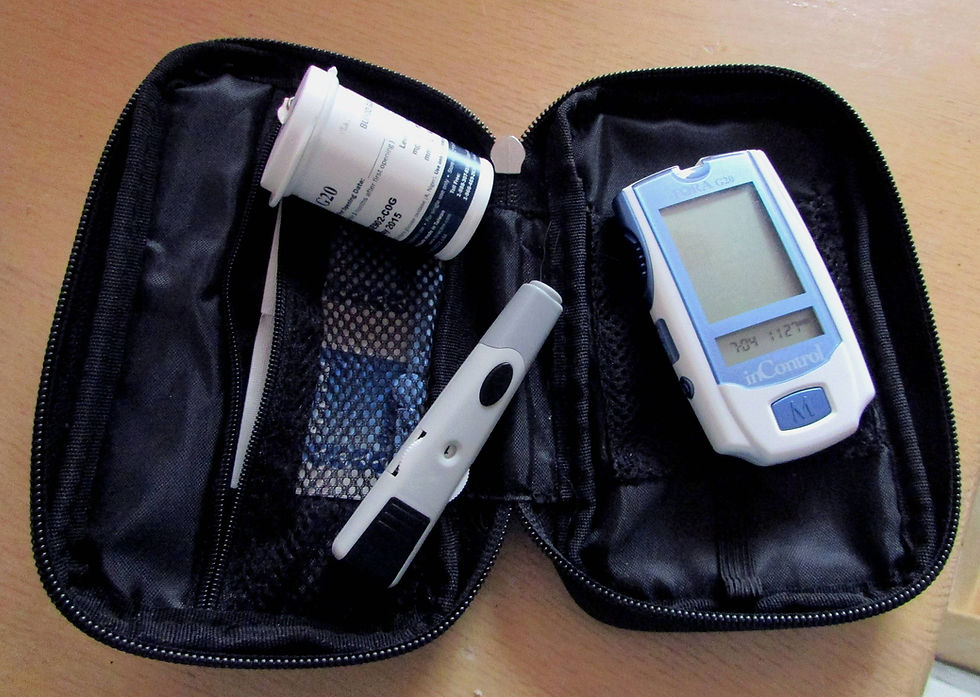Prediabetes: The Silent Red Flag You Can’t Afford to Ignore
- Eric Han
- Mar 19
- 3 min read

Prediabetes is far from a harmless or benign condition—it is a critical warning sign that the body's metabolism is already in distress. Both patients and healthcare providers often overlook or minimize its significance, but emerging research underscores the urgency of recognizing and addressing prediabetes early. Here’s why it should be taken seriously:
1. High Likelihood of Progression to Type 2 Diabetes
Prediabetes is the strongest predictor of developing type 2 diabetes. Without intervention, an estimated 70% of individuals with prediabetes will progress to full-blown diabetes in their lifetime, with many doing so within just 5–10 years. Type 2 diabetes is a chronic and progressive disease that can lead to debilitating complications, including nerve damage, kidney failure, and blindness. The best opportunity to prevent this progression is during the prediabetes stage, where interventions are most effective.
2. Increased Risk of Cardiovascular Disease (Even Without Full Diabetes)
Many people assume that heart disease risk only becomes significant after a diabetes diagnosis, but research shows that individuals with prediabetes already have an increased risk of:
Heart attacks and strokes due to blood vessel damage.
Hypertension (high blood pressure) from increased insulin resistance.
Dyslipidemia (abnormal cholesterol levels), contributing to plaque buildup in arteries.
Studies suggest that even a slight elevation in blood sugar can start damaging blood vessels years before diabetes is diagnosed. This means that prediabetes is not just a risk factor for diabetes—it’s a cardiovascular risk factor in itself.
3. Metabolic Dysfunction is Already Happening
Prediabetes is not just "a little high blood sugar"—it signals deeper metabolic problems:
Insulin resistance is increasing, making it harder for cells to use glucose properly.
The pancreas is already struggling to keep up with insulin demands.
Fat accumulation in organs like the liver (non-alcoholic fatty liver disease, NAFLD) is more common, further worsening insulin resistance.
These changes indicate the body is already failing to regulate blood sugar effectively, setting the stage for worsening metabolic disease.
4. Association with Other Serious Health Issues
Prediabetes isn’t only about diabetes—it has been linked to a range of other conditions, including:
Non-alcoholic fatty liver disease (NAFLD), which can progress to liver inflammation and cirrhosis.
Cognitive decline and dementia, including Alzheimer’s disease, due to chronic inflammation and vascular damage.
Certain cancers, including pancreatic, colon, and breast cancer, as elevated insulin and glucose levels can fuel tumor growth.
Chronic kidney disease, which may start developing before diabetes is even diagnosed.
5. Early Intervention Can Reverse or Delay Progression
The most important takeaway is that prediabetes is reversible with timely action. Studies, including the landmark Diabetes Prevention Program (DPP), have shown that lifestyle changes such as:
Losing 5–7% of body weight significantly reduces diabetes risk.
Engaging in 150 minutes of moderate exercise per week improves insulin sensitivity.
Adopting a balanced diet rich in whole foods, fiber, and healthy fats can stabilize blood sugar levels.
Individuals who take proactive steps at the prediabetes stage can cut their risk of developing diabetes by more than 50%, and in some cases, completely reverse their metabolic dysfunction.
The Bottom Line: Prediabetes is a Wake-Up Call, Not a Waiting Room
Prediabetes should never be dismissed as a minor issue or an inevitable stepping stone to diabetes. Instead, it’s a powerful opportunity for both patients and providers to intervene and prevent serious disease. The earlier we act, the better the long-term outcomes, not just for blood sugar control but for overall health, longevity, and quality of life.
🔴 Ignoring prediabetes is a missed chance to prevent serious illness. Addressing it head-on can change the trajectory of health for years to come.
Disclaimer:
This article is for informational purposes only and should not be considered medical advice. Always consult a healthcare professional before making any changes to your diet, exercise, or medical treatment.




Comments